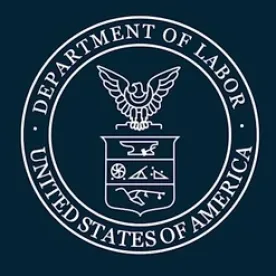The U.S. Department of Labor (DOL) recently issued new model notices and certification forms (FMLA forms), which can be used by employers to administer the federal Family and Medical Leave Act (FMLA) and fulfill the FMLA notice obligations. These forms are not mandatory and employers may choose to use their own forms or prior versions of these forms. The DOL has stated that the forms were revised to be clearer and more user-friendly for employers, leave administrators, health care providers, and employees. The new forms feature a number of “check boxes” rather than requiring written responses. Additionally, certain topics are now more detailed, including employee eligibility and rights and responsibilities, leave designations, and medical information. The key revisions to the new forms are summarized below and the new model FMLA forms are available here: https://www.dol.gov/agencies/
Key Revisions to the New Forms
-
Notice of Eligibility & Rights and Responsibilities (Form WH-381) – Contains three separate sections: 1) “Notice of Eligibility,” 2) “Additional Information Needed,” and 3) “Notice of Rights and Responsibilities.” The “Notice of Eligibility” section now includes a description of the eligibility rules and definitions of key terms, such as “spouse,” “child” and “parent.” The “Additional Information Needed” section now details the categories of information that the employer is requesting in order to determine whether the employee’s absence qualifies for FMLA leave. The “Notice of Rights and Responsibilities” section includes six subparts that significantly detail the employee’s rights and responsibilities under the FMLA, including the employee’s FMLA leave entitlement, substitution of paid leave, maintenance of health benefits, other employee benefits, return-to-work requirements, and other requirements while on FMLA leave.
-
Designation Notice (Form WH-382) – Contains three separate sections: 1) “Employer,” 2) “Additional Information Needed,” and 3) “FMLA Leave Approved.” The “Employer” section now provides “check the box” options for the employer to select the qualifying reason for which the employee is requesting FMLA leave as well as options for indicating whether the employee’s FMLA request has been approved or denied or whether additional information is needed. Under the “Additional Information Needed” section, the form now includes a section concerning “Incomplete or Insufficient” medical certifications and space is provided for the employer to explain exactly what information is still needed from the employee and when such information is due. Under the section titled “FMLA Leave Approved,” the form details the employee’s leave entitlement, including information regarding substitution of paid leave, as well as the relevant return-to-work requirements.
-
Medical Certifications (Forms WH-380-E and WH-380-F) – Contains some of the most notable revisions. Specifically, the new forms now request more detailed information from the employee or family member’s health care provider, including the specific serious health condition (e.g., inpatient care, pregnancy, chronic condition, permanent or long-term condition, etc.) and a “best estimate” of the type and amount of leave needed (e.g., reduced schedule, incapacitated for continuous period, planned medical treatment on specified dates, etc.).
In addition, the certification forms now explicitly instruct health care providers not to provide information restricted by the Genetic Information Nondiscrimination Act (GINA). Also, the new forms do not contain questions requesting extended narrative responses from health care providers but instead, expressly state that this information is not required and that certain information (e.g., diagnosis) may be restricted by state or local law. This language is particularly relevant in states that have their own FMLA laws that differ from the federal FMLA; for example, under Connecticut’s state FMLA law, health care providers cannot be required to provide a diagnosis.
The DOL has also revised its certification forms for employees requesting military family leave for a qualifying exigency or to provide care for an ill or injured current service member or veteran. For example, the qualifying exigency certification form now includes “check the box” options for the type of leave (e.g., rest and recuperation, post-deployment activities, etc.), the amount of leave, and the schedule of leave. Moreover, the certification forms for caregiver leave of a current service member or veteran now include “check the box” options for the type of care being provided (e.g., psychological comfort, physical care, etc.), the seriousness of the relevant injury or illness, and the amount of leave needed (e.g., reduced schedule basis, intermittent basis, etc.).
Overall, although their use is optional, these FMLA forms appear to be easier to use and may be helpful to employers in administering FMLA leaves of absence. However, there are still opportunities for the DOL to better support the FMLA administration process with additional revisions, such as noting whether a certification is an initial, annual, or re-certification form or is being used as part of a second or third opinion. The forms remain silent in terms of advising employees and health care providers to provide truthful and accurate information. Further, these new forms only pertain to federal FMLA and do not address state-specific leave laws that may also apply. Employers may wish to create adapted versions of the DOL’s FMLA forms to address these issues.
Employers may wish to consider whether switching to the new forms would add value to the administration of their FMLA leave programs and whether they will need to modify the new forms to incorporate applicable state-law provisions. Those employers already using modified forms to comply with the administration of state FMLA laws may wish to revise their existing forms to include the new format and details for the federal FMLA.





 />i
/>i
